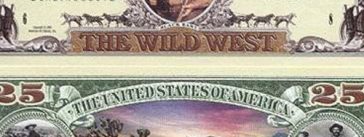In this episode, Walter digs into finding the “best timeframe” for placing a trade — or is there even one? According to him, looking for this is like looking for the “perfect” wife. You will also find out here how to confirm if you’re on the right charts. And, when it comes to “push or shove”, which timeframe should you go for?
Download (Duration: 05:44 / 6.56 MB)
In This Episode:
00:44 – the best dog
02:02 – how to confirm?
03:53 – wind to your back
05:12 – broader context
Tweetables:
What is your timeframe for trading? [Click To Tweet].
Try to find that turning point [Click To Tweet].
Bottomline is it all depends on you [Click To Tweet].
Announcer: Sometimes, forex trading is a wild and wooly place to be. That’s why Hugh is here, to post your questions to Walter, the naked forex guy. Hugh’s got questions and Walter’s got the answers. Here at the Truth About FX Podcast.
Hugh: Hi, Walter. A reader writes in and asks, which timeframe is the best one for deciding when to place a trade?
Walter: It’s like asking the question which kind of a woman is the best for being my wife. It’s the same kind of thing. What is the best kind of dog to have as a pet? Well, I don’t know. I mean, what do you like?
Really, it’s going to depend on what is your timeframe for trading. If you can sit in front of the chart for 6 or 7 hours, maybe you’ll trade the H1 chart or the M15 chart or the M30 chart.
If you want to spend 30, 40 minutes a day looking at the charts then it’s probably going to be the D1. If you can check in the charts every so often, 3 or 4x a day, maybe you can try the H4 charts. It’s really going to depend on what you have in terms of time.
A lot of traders I know, they’re working a job so W1, D1 those are the sorts of the timeframes that makes sense because they can quickly check them in the morning before they can go to work. They can quickly check them in the evening when they come home from work and that’s it. You don’t have to babysit or anything like that.
To me, the most likely answer is going to be W1 and D1 charts but a lot of traders say, “Oh, I can’t afford a stoploss at 375 pips on the W1 chart.”
Well then, you just move to a broker who allows you to trade for a smaller lot sizes and that you can lock that in so that your risk is the same on the H1 chart or the W1 chart. That’s what I would say but I don’t really know. I mean, it depends.
The other thing is people are going to say, “Well, how do you confirm if you’ve got a trade on H1 or the H4, how do you confirm?” One thing that I will keep in mind is that if for example, this came up this week, there was a chart where it had a really strong daily belt — I can put the eBook for the belt trade in the shownotes so you guys have that — but the Belt is really simple. It’s a gap open and the market goes in the other direction.
Now, we have a daily belt on the chart and then it printed an H4, really weak looking Kangaroo tail so it’s a reversal. The reversal on the H4 was a bearish signal and the D1 was a bullish.
Now, if you’ll just look at the H4, you might be really tempted to take it. The problem was that the D1 was so strong as a bullish signal that H4 candle probably just signify that it was just going to retrace a bit against the D1 Bullish signal and it was going to eventually go higher.
Now, we still don’t know the answer to this because at the moment, it just simply retraced a bit in alignment with the H4 candle but I suspect that the D1 will win out and go higher.
This is a long winded way of saying that if it comes down to push or shove, I will almost always go with the higher timeframe. So, if I’ve got a H4 sell signal and I’ll look at the D1 and it’s got this massive bullish buy signal, then I’m not going to take that sell signal.
Some of you are thinking, “Wait a minute, if the market is always going to turn around first on the M5 and then the M15, M30 and the H1 and the H4,” and that’s true. That is absolutely true but when you’re doing that sort of trading, that’s easiest to do when you’re with the trend.
If you’re trading with the trend and you see that pull back, let’s say it’s a bullish trend so it’s going up and then it pulls back and it goes down. Now, it makes sense to go to the lower timeframe because you’re already at the trend, at your back.
You’ve got the wind to your back, you know you’re going up, you want to buy because you’re in a bullish trend. Now you can go down and look at that H1 reversal candle and expect it then it would fall through on the H4 and then the D1 and the W1 and so forth.
So, that’s the way to approach it there but when you’re just looking at a simple reversal, I wouldn’t do that. Like, if it’s a directionless market or whatever or even if it’s going the other direction like it’s going up and you want to sell.
So, really the only time that you would look at the lower timeframe is when you’re precisely trying to find that turning point. The best time really for that is when it’s a retracement against the dominant trend.
Look, go into a bookstore or look on Amazon, there are literally dozens of books on that simple idea. There are traders that built fortunes out of a simple idea which is wait for the trend. Once you see the trend, wait for the pull back.
Once you see for the pullback, drill down on the charts to the lowest timeframe you can stomach and get your entry there. There’s a whole bunch of books starting with the “Come Into My Trading” with Alexander Elder.
That’s the first time that I saw that concept in a book but lots of traders will share this idea with you and it makes a lot of sense. So, that’s something that I would say but it’s really going to depend on the individual.
In the broader context, I would always go with the higher timeframe unless, of course, you are looking for that simple rebound at the end of a retracement and a strong trend. Hopefully — I know that’s a long winded answer once again but hopefully — that makes sense.
Hugh: Yeah, totally. Totally makes sense. Thanks for that, Walter.
Walter: Thank you.
SHOWNOTES
Podcast: Play in new window | Download
Subscribe: Apple Podcasts | Android | RSS



 EP188: Is Real-time Biofeedback Beneficial for Traders?
EP188: Is Real-time Biofeedback Beneficial for Traders? EP79: How To Avoid Intra-day Trading
EP79: How To Avoid Intra-day Trading EP9: How to Maximize Trend Profits in Trading
EP9: How to Maximize Trend Profits in Trading EP182: How does the Profit Bricks Method Work
EP182: How does the Profit Bricks Method Work
Leave a Reply